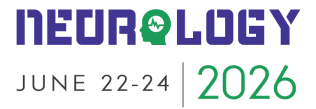Neuroinformatics and Computational Neuroscience
The field of neuroinformatics combines informatics and neuroscience. Artificial neural networks are used to process neuroscience data and information in neuroinformatics. Neuroinformatics is a branch of study concerned with the creation of neuroscience data and knowledge bases, as well as computer models and analytical tools for sharing, integrating, and analysing experimental data and the advancement of hypotheses about how the nervous system works. Neuroinformatics is a discipline of neuroscience that studies many elements of neurological systems. It does not deal with matter or energy.
Computational neuroscience is a discipline of neuroscience that studies the principles that regulate the development, structure, physiology, and cognitive capacities of the nervous system using mathematical models, theoretical analyses, and abstractions of the brain. Computational neuroscience is a subfield of theoretical neuroscience that uses computational simulations to evaluate and solve mathematical models; yet, the two subjects are sometimes used interchangeably.
- Deep Learning, Artificial Intelligence and Machine Learning
- Human psychology
- Medical sciences
- Mental models
- Computational anatomy
- Information theory

Ken Ware
NeuroPhysics Therapy Institute, Australia
Robert B Slocum
University of Kentucky HealthCare, United States
Yong Xiao Wang
Albany Medical College, United States
W S El Masri
Keele University, United Kingdom
Jaqueline Tuppen
COGS Club, United Kingdom
Milton Cesar Rodrigues Medeiros
Hospital Santa Casa de Arapongas, Brazil




Title : Perception and individuality in patient cases identifying the ongoing evolution of Myalgic Encephalomyelitis/Chronic Fatigue Syndrome (ME/CFS)
Ken Ware, NeuroPhysics Therapy Institute, Australia
Title : Narrative medicine: A communication therapy for the communication disorder of Functional Seizures (FS) [also known as Psychogenic Non-Epileptic Seizures (PNES)]
Robert B Slocum, University of Kentucky HealthCare, United States
Title : Personalized and Precision Medicine (PPM), as a unique healthcare model through biodesign-driven biotech and biopharma, translational applications, and neurology-related biomarketing to secure human healthcare and biosafety
Sergey Victorovich Suchkov, N.D. Zelinskii Institute for Organic Chemistry of the Russian Academy of Sciences, Russian Federation
Title : Neuro sensorium
Luiz Moutinho, University of Suffolk, United Kingdom
Title : Traumatic Spinal Cord Injuries (tSCI) - Are the radiologically based “advances” in the management of the injured spine evidence-based?
W S El Masri, Keele University, United Kingdom
Title : Scalp acupuncture with functional electrical stimulation for the treatment children with autism spectrum disorder
Zhenhuan Liu, Guangzhou University of Chinese Medicine, China